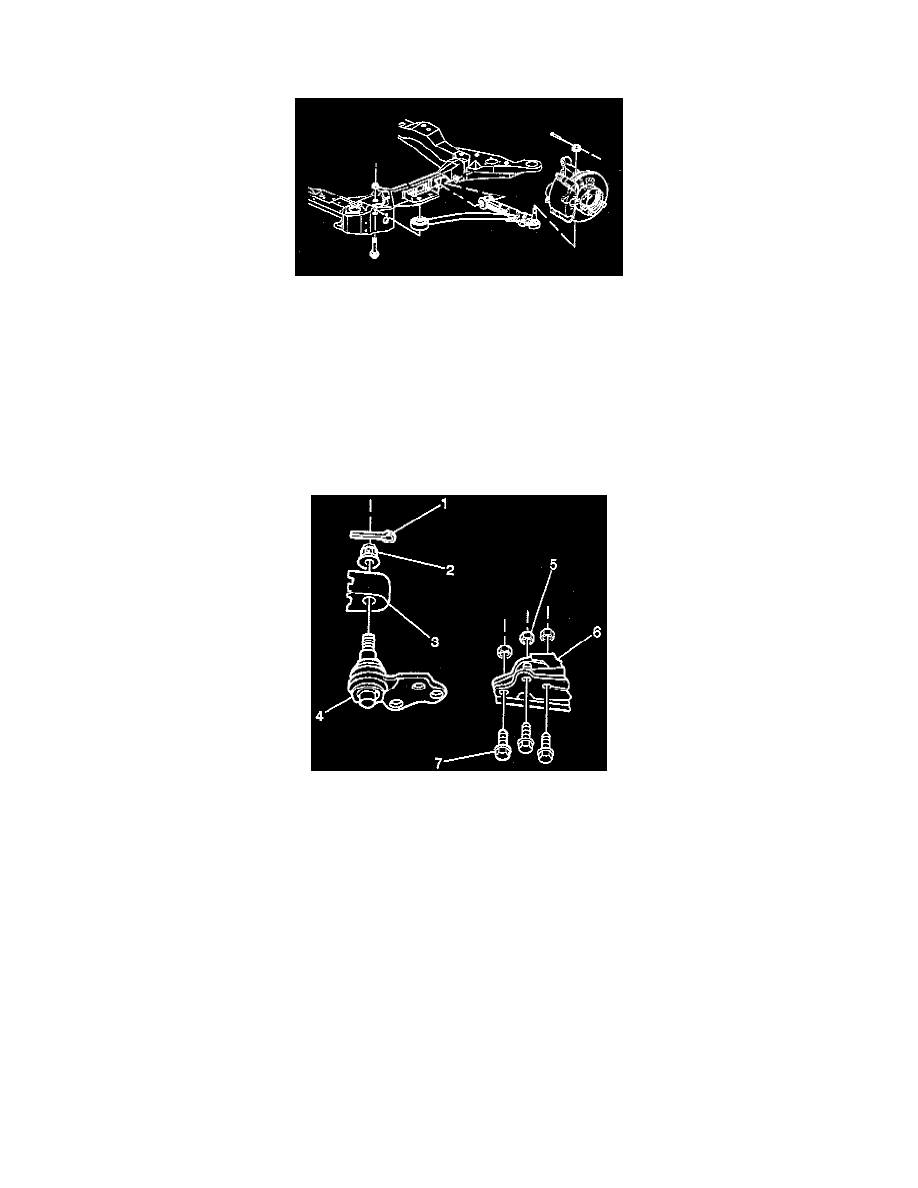DeVille d Elegance V8-4.6L VIN Y (1998)

Ball Joint: Service and Repair
Front Suspension
REMOVAL
Tools Required:
^
J35315 Ball Stud Separator
^
J35551 Ball Joint Nut Wrench
1. Raise the vehicle and support the frame with jack stands.
2. Remove the tire and wheel assembly.
3. Remove the Road Sensing Suspension (RSS) position sensor from the lower control arm.
4. Remove the ball joint from the knuckle.
5. Drill out three rivets retaining ball joint starting with a 1/4 inch drill bit and finishing with a 1/2 inch drill bit.
6. Remove the joint.
INSTALLATION
1. Install the new ball joint (4) into the control arm (6).
NOTICE: Use the correct fastener in the correct location. Replacement fasteners must be the correct part number for that application. Fasteners
requiring the use of thread locking compound or sealant are identified in the service procedure. Do not use paints, lubricants, or corrosion
inhibitors on fasteners or fastener joint surfaces unless specified. These coatings affect fastener torque and joint clamping force and may damage
the fastener. Use the correct tightening sequence and specifications when installing fasteners in order to avoid damage to parts and systems.
2. Install the ball joint to control arm bolts.
^
Tighten the ball joint to control arm nuts (5) to 68 Nm (50 ft. lbs.).
^
Tighten the ball joint nut (2) to 10 Nm (84 inch lbs.) using J 35551 90 ° to torque wrench. Tighten the nut an additional 120 °. When
tightening the nut a minimum torque of 50 Nm (37 ft. lbs.) must be obtained. If 50 Nm (37 ft. lbs.) is not obtained, inspect the ball joint for
stripped threads. If threads are satisfactory, replace the ball joint and knuckle. If required, turn the nut up to an additional 60 ° in order to allow
for the installation of the cotter pin (1).
NOTICE: Use the correct fastener in the correct location. Replacement fasteners must be the correct part number for that application.
Fasteners requiring the use of thread locking compound or sealant are identified in the service procedure. Do not use paints, lubricants, or
corrosion inhibitors on fasteners or fastener joint surfaces unless specified. These coatings affect fastener torque and joint clamping force and
may damage the fastener. Use the correct tightening sequence and specifications when installing fasteners in order to avoid damage to parts
and systems.
